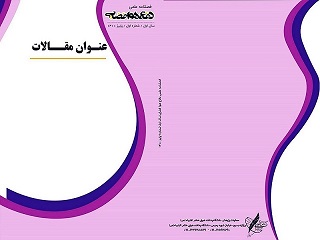نوع مقاله : مقاله پژوهشی
نویسندگان
1 دکتری، دانشکده هوافضا ، دانشگاه هوایی شهید ستاری، تهران، ایران
2 دانشجوی دکتری، دانشکده هوافضا ، دانشگاه صنعتی مالک اشتر، تهران، ایران
چکیده
یکی از روشهای نوین خنککاری دیواره محفظه احتراق استفاده از جریان گردابهای دو جهته در محفظه احتراق میباشد. افزایش پایداری احتراق، کاهش دمای دیواره محفظه احتراق، کاهش افتها، افزایش کارآیی و یکنواخت بودن احتراق از خصوصیات موتور گردابهای میباشد. همچنین حجم شعله در موتور گردابهای در شرایط مشابه از حجم شعله در موتورهای محوری معمول بیشتر است و با وجود شعله بزرگتر در موتور گردابهای، به علت وجود جریان گردابهای سرد خارجی، دمای دیواره محفظه احتراق از دمای دیواره موتور محوری پایینتر است. در این مقاله با شبیهسازی و حل عددی محفظه احتراق یک موتور گردابهای خاص در شرایط تک فاز گازی با سوخت هیدروژن و اکسیدکننده اکسیژن و با فرض جریان غیرقابل تراکم و صرفنظر از اثر نازل، میدان جریان در داخل محفظه احتراق بررسی شده است. بررسی خطوط جریان نشاندهندهی یک گردابه اجباری در مرکز هسته و یک گردابه آزاد در اطراف هسته است. نتایج شبیهسازی نشان میدهد گام خطوط جریان در نزدیکی سقف، بسیار کوچک و شدت چرخش جریان زیاد است و باعث به حداکثر رسیدن میزان اختلاط سوخت و اکسیدکننده میگردد. شعله در محاصره گردابه خارجی است. در محفظه شبیه سازی شده با افزایش فاصله از لبه پله به سمت سقف، اختلاط واحتراق افزایش یافته و به تبع آن افزایش دمای دیواره را خوهیم داشت. همچنین با حرکت از دیوارهها به سمت مرکز محفظه احتراق فشار کاهش مییابد.
کلیدواژهها
موضوعات
عنوان مقاله [English]
Simulation and Numerical Study of Heat Transfer in the Vortex Combustion Chamber
نویسندگان [English]
- davood moosavian 1
- Morteza Ahmadi Nohedani 2
1 Dr., Department of Aerospace Engineering, Shahid satari University, Tehran, Iran.
2 Department of Aerospace Engineering, Malek-Ashtar University of Technology, Tehran, Iran
چکیده [English]
A new method for cooling the combustion chamber walls, it is cooled by the bidirectional vortex Flow. Combustion stability, reducing the temperature of the combustion chamber walls and reduces losses and increase efficiency and uniformity are the properties of the vortex combustion engine. In similar circumstances the volume of flame the vortex engine is greater than the volume of flame at common axial engine. However; temperature of the Wall of the combustion chamber of the vortex engines less than temperature of the Wall of the combustion chamber of the engine Axial. Because cooled by the external vortex. In this study, was carried out Simulation and Numerical Solution the combustion chamber a special vortex engine in conditions single phase gaseous to fuel hydrogen and oxidant oxygen and assuming incompressible flow and irrespective of effect nozzle In order to simplify for review conditions governing on flow the combustion chamber. Examination of the streamlines shows a forced vortex in the center of the core and a free vortex around the core. The simulation results show that the pitch of the Stream lines near the roof is very small and the intensity of the flow rotation is high, which causes the maximum mixing of fuel and oxidizer. The flame is surrounded by an external vortex. In the simulated chamber, by increasing the distance from the edge of the stairs to the ceiling, the mixing and combustion will increase, and as a result, we will have an increase in the temperature of the wall.
کلیدواژهها [English]
- Vertex engine
- bidirectional vortex Flow
- combustion chamber
- Numerical Study

